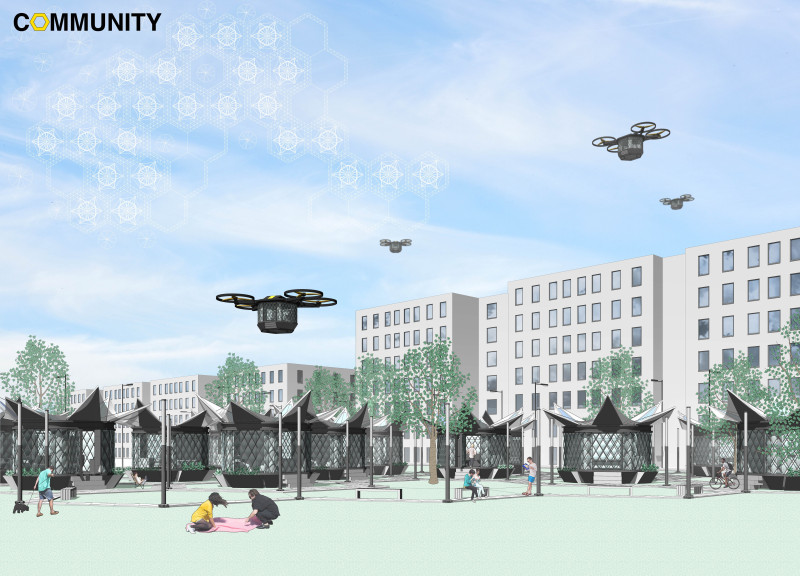5 key facts about this project
DROBE is an architectural project designed to address the evolving needs of contemporary urban living, particularly for young professionals who require flexibility and mobility in their housing solutions. This project presents a network of modular living units, referred to as "Hives," which prioritize efficiency, sustainability, and community interaction. The architectural design incorporates unique elements that redefine conventional notions of residential spaces and living arrangements.
Innovative Design Approaches
The DROBE project employs a hexagonal form for its living units, optimizing spatial usage while fostering a sense of community. Each Hive features large glass panels that enhance transparency, allowing natural light to permeate the interiors and creating a connection with the outside environment. The use of sustainably sourced timber for flooring adds a natural aesthetic, ensuring that the units maintain a balance between modernity and ecological responsibility. The inclusion of solar panels on the roofs aligns with the project’s commitment to renewable energy, making the living units partially self-sufficient.
The design incorporates innovative mobility solutions, with units managed by local drones for transportation and repositioning in urban settings. This approach not only emphasizes adaptability but also presents a unique infrastructural integration of technology within everyday living. Furthermore, each Hive is designed with flexible spaces that can accommodate various functions, from personal workstations to communal areas, enhancing the overall utility of the living environment.
Community Interaction and Sustainability
In addition to its architectural design, the DROBE project fosters community engagement by clustering multiple Hives together. This arrangement promotes shared outdoor spaces, encouraging social interactions among residents. The design includes a micro-farming area, supporting sustainability and self-sufficiency while enhancing the ecological footprint of the community.
The project also focuses on resource efficiency, incorporating systems for rainwater collection and gray water recycling. These design aspects help to minimize reliance on traditional utilities, aligning with the project’s overarching goal of promoting environmentally responsible living.
For further insights into the DROBE project, including architectural plans and sections, readers are encouraged to explore the project presentation. By reviewing the specific architectural designs and ideas, one can gain a deeper understanding of the design elements that distinguish DROBE as a significant contribution to modern residential architecture.





















































